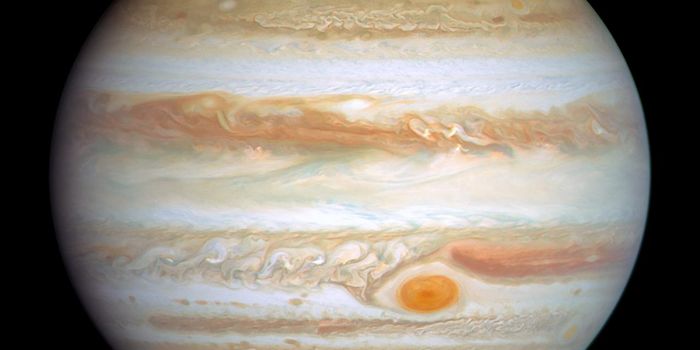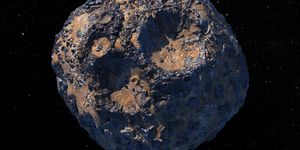The Mysterious Location of Massive Stars
A team of astronomers at Georgia State University recently published results in The Astronomical Journal that find that the amount of time for a star they observed to travel from its birthplace to its current location in space exceeds the estimated age of the star. This begs the question, how did the star travel so far in its lifetime? In the paper, the team suggests an explanation for how massive stars can be found far from their birthplaces in the disk of our Milky Way galaxy.
Massive stars, tens to hundreds of times more massive than our Sun, are very hot and burn through the hydrogen they are composed of very quickly through nuclear reactions in their cores. These nuclear reactions are what cause stars to shine. Since these massive stars rapidly use up their fuel, the lifetimes of these stars are extremely short – 10 million years, versus 10 billion years for the lifetime of Sun-like stars.
Stars are born in giant nebulae of gas and dust. They are born out of these clouds with an initial speed and direction through space inherited from the nebula, propelling them away from their birthplaces. These nebulae are very cold and dense, a key factor that drives star formation, and are located only in the flat disk part of our galaxy. Thus, clusters of young stars are found in the disk of the galaxy. Since the lifetimes of massive stars are so short, we should expect them to live and die relatively close to their birthplaces because they wouldn’t have much time to travel before they burn through their fuel. So, why would a massive star be found outside the disk of our galaxy?
Douglas Gies and his team observed the star HD 93521; using the European Space Agency’s Gaia telescope they determined the star is found 3,600 light years (or 21.1 quadrillion million miles – that’s 21.1 with 15 zeros behind it!) above the disk of the galaxy. They also observed the spectrum of the star – the light emitted by the star, as a function of wavelength – to determine the star’s mass, age, and motion through space. They found that HD 93521 is approximately 17 times more massive than the Sun. There exists a correlation between the mass and age of a star, which is driven by the rate at which stars use up their fuel for nuclear reactions in their cores. Based on this correlation, the predicted age of the star is 5 million years. The motion of the star (its speed and direction through space) tells us the star would need to travel for 39 million years to reach its current location. Thus, the star should have burned through its nuclear fuel long before it could reach the location in which it was observed. How could this be possible?
Artist's rendition of the Milky Way galaxy with bright, massive stars above the plane of the disk of the galaxy. Credit: Georgia State University
The key to this discrepancy could be explained by stellar mergers. The team suggests that HD 93521 left the disk of the galaxy as two separate, low-mass stars, rather than the single star that is currently observed. The rate at which small stars burn through their fuel is much slower than massive stars, thus these stars have the ability to stray much further away from their birthplaces. The extremely high rotational speed of HD 93521 is the key evidence that suggests that two separate stars merged to form this star; the two small stars must have existed in orbit around each other, close enough that they became closer and closer to each other over time due to the effects of gravity and eventually merged into the star we observe today. Stellar mergers would mean that this higher-mass star we observe is actually much older than it appears since it began its life as two separate, lower-mass stars that live longer lives, which would account for the peculiar difference between the star’s lifetime and the travel time to its current location.
Sources: Georgia State University, Phys.org, Science Daily









